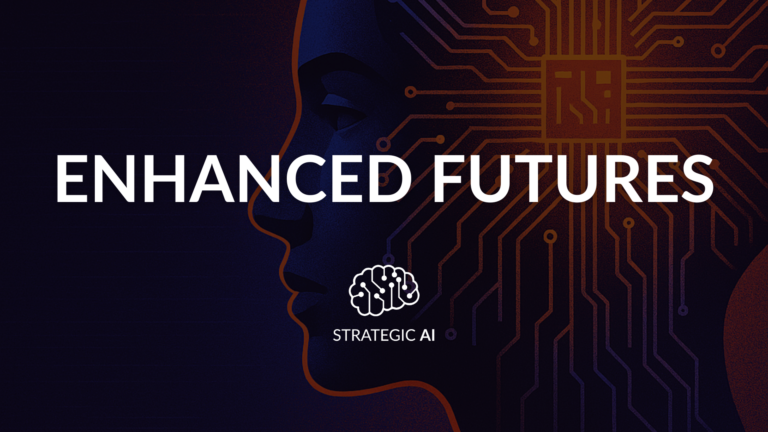
Written by Fola Yahaya

We seem to be sleepwalking into a crisis that I’ve dubbed the A(I)pocalypse. Widely available AI tools now handle activities once reserved for humans, like creating ads, translating content or even basic legal work. And unfortunately, technological disruption seems to be fuelling a wave of job losses that are outpacing employment creation.
Not enough smart people are thinking through what happens when businesses decide to not only stop hiring white-collar workers, but actually reduce their headcount. In my informal discussions with fellow business owners, the mood music is definitely one of questioning whether layers of junior staff and middle management are surplus to requirements. A recent survey of global chief executives at Davos found that over 25% of them expect AI to cause headcount reductions of at least 5% this year.
Unlike the narrowly defined duties of previous innovation waves, AI’s versatility threatens entire professions. It may take years before sufficient roles emerge to reabsorb redundant marketing managers, writers and HR professionals.
The white-collar AI job disruption has begun, and will likely intensify before a new equilibrium is reached. Herein lies a series of dilemmas. AI will boost productivity in the short term but ultimately dismantle livelihoods. The key question is: Do we guide AI development or does it guide us? The AI job disruption has begun, and it’ll get worse before it gets better. Now, we witness technology’s double-edged sword – solving problems and dismantling livelihoods in one stroke.
OpenAI quietly released its long-promised store last week. As innocuous as this seems, it has a seismic impact on the nascent generative AI landscape. OpenAI’s new GPT-powered app allows anyone to build custom AI apps powered by the same technology underlying ChatGPT, and monetise them. This has explosive implications that could fundamentally reshape the AI competitive landscape. Why? For a number of reasons:
It challenges Google. Custom GPTs allow people to set up their own search engines or tell them the answers rather than using Google’s increasingly polluted search function. This means bypassing Google’s annoying ads and hopefully chipping away at its 90% online search market share. On this key point, see this excellent interactive by the Verge on how Google destroyed search.
It opens up monetisation for individuals, further entrenching the OpenAI advantage. By democratising access, the GPT store opens revenue streams for countless start-ups while entrenching OpenAI’s pole position – a classic platform play bolstering the frontrunner.
Data, data, data. While OpenAI can crawl the internet, it can’t crawl your personal files – at least it couldn’t, until now. People are uploading their personal and company files to fine-tune their GPTs, giving OpenAI access to a treasure trove of qualified and curated training data for diddly squat (free). The master stroke lies in the guaranteed data that flows back to OpenAI from all apps built atop its algorithms.

Sam Altman, head of OpenAI, says we should be preparing for the ‘Singularity’ – a point in time when humans lose control over their technological inventions and subsequent developments due to the rise of machine consciousness.
Of course he’s hyping AI. But what Sam says has an unnerving habit of coming true. At a recent talk at the Y Combinator incubator, Altman issued a stark warning to start-ups – brace for AI’s imminent leap into godlike intelligence. He hinted that GPT-5 will massively eclipse even today’s cutting-edge GPT-4, so they shouldn’t squander their scarce resources on incremental model tweaks. Instead, he thinks start-ups should focus on ideas assuming 1000x smarter assistants!
People… writing well is difficult and time-consuming, but ultimately critical if you want to communicate with impact. Unless you don’t care about your audience, please take the time to edit your ChatGPT output. Or, better still, go old school, be human and write from scratch.
Struggling to get Midjourney or Dall-E to bend to your will? Then it’s time to get all self-referential with your GenAI.
1. Upload an Image

2. Prompt ChatGPT with this: “You are an expert prompt engineer and want to replicate the image attached. Tell me the exact prompt to use to replicate the image in Dall-E”.
3. Paste the output of this prompt back into ChatGPT, or a much better image creator like Midjourney or Visual Creative or…
4. Et voila – a troublingly easy way to rip off a graphic designer. Herein lies the problem with GenAI: the incredible ease with which it can reverse-engineer and surpass human creations. (N.B. Make sure you get a designer to edit the weird hands.)

Elon’s Optimus gets busy with haberdashery!

To learn more about us and how we can support you with your digital transformation and communications journey, follow the link here.

Network Hub, 300 Kensal Road, London, W10 5BE, UK
We deliver comprehensive communications strategies that deliver on your organisation’s objectives. Sign up to our newsletter to see the highlights once a quarter.